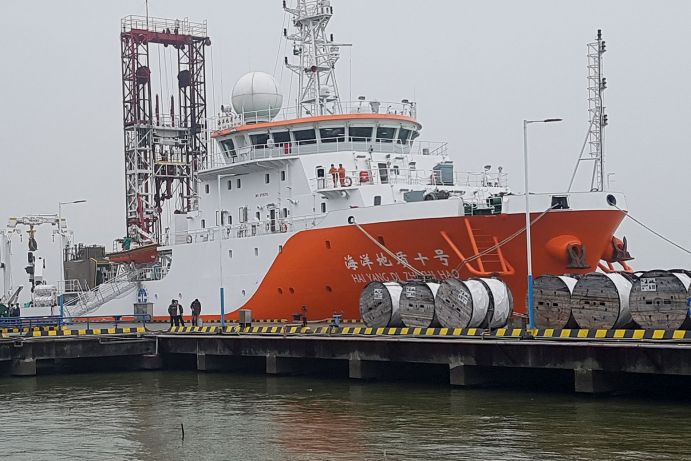Chinese-German expedition in the South China Sea investigates impact of megacities on coastal seas
On September 1, 2018, a ship-based research cruise starts from Guangzhou down the Pearl River to the coastal areas of the South China Sea. As part of the joint German-Chinese project MEGAPOL (short for Megacity's fingerprint in Chinese marginal seas: Investigation of pollutant fingerprints and dispersal), which is coordinated by the Leibniz Institute for Baltic Sea Research (IOW), the 30-day cruise is investigating environmental impacts caused by conurbations with up to 100 million inhabitants on adjacent sea areas. IOW researcher Joanna Waniek is co-chief scientist of the expedition.

Starting from Guangzhou, a city of 14 million inhabitants in southern China, the interdisciplinary research team with experts from the fields of marine chemistry, geology and physics as well as instrumentation specialists will investigate a grid of in total 70 sampling stations in the immediate vicinity of the Pearl River on the northern shelf of the South China Sea. Thus, the study area lies within the impact zone of one of the largest continuous urban landscapes in the world, which includes further megacities besides Guangzhou, such as Hong Kong and Shenzhen, and has a total population of almost 100 million people. To detect environmental changes even in deeper oceanic regions, the entire water column will be sampled and additional sediment samples will be taken at selected stations. Extensive analytics in environmental chemistry for nutrients, heavy metals, classic organic pollutants and so-called emerging pollutants such as microplastics, pharmaceuticals, hormones and UV filters from suntan lotions aim at finding out to what extent the traces of the giant cities can be found in the sea and which physical processes influence the dispersal pathways.
Our research area is an ideal model system for our project, not only because of the nearby extremely large conurbations. It is also very well suited for studying processes of exchange between land and ocean as well as changes in the physical forces behind this exchange, such as monsoon, ocean currents and climate change, over longer time scales, says Prof. Joanna Waniek from the IOW, who will share the chief scientist position and the coordination of the expedition team on board the Hai Yang Di Zhi with her Chinese colleague Dr. Huayang Gan from GMGS. All of the eight IOW participants already carried out research in the South China Sea 3 years ago and can now build on the results of this first expedition. We are very much looking forward to continuing our cooperation with our Chinese partners, which has proved to be very fruitful. In addition to the exciting scientific questions, we have the rare opportunity to get to know the working methods of our Chinese partners at sea, Waniek continues.
Despite the preparatory work, however, much is still new scientific territory: Which pollutants occur where? What are the temporal and spatial distribution patterns? What is the lifetime of the different substances, explains the IOW scientist some of the open questions. The detection of emerging pollutants is also far from routine. We have already developed methods for their detection in the water column. However, we are still working at high pressure on methods to detect these emerging pollutant classes in sediments, says the oceanographer.
The findings of this year's South China Sea expedition, together with the measurements from 2015 and an expedition with the German deep-sea research vessel SONNE in August 2019, will provide information on the development of man-made pollution in the region over a five-year period. The results we expect to find in China's coastal seas will be of great interest not only to the Chinese authorities. In Germany, too, the findings should be taken into account as a warning signal, because cities are also growing in Germany and are putting more pressure on the coastal seas and coastal regions, Joanna Waniek concludes on the upcoming research cruise.



